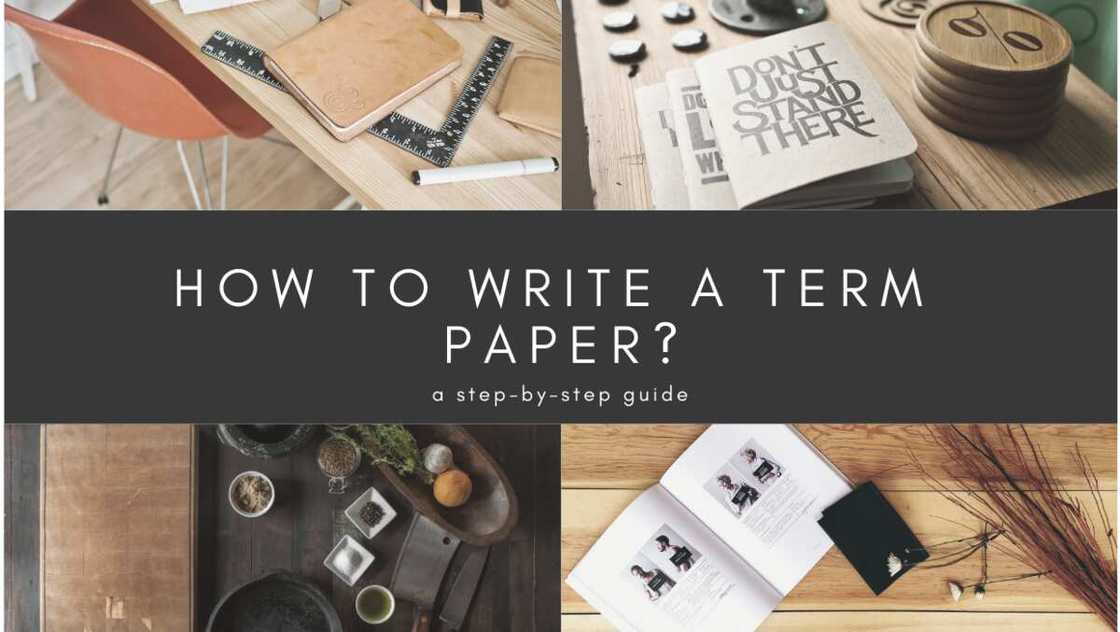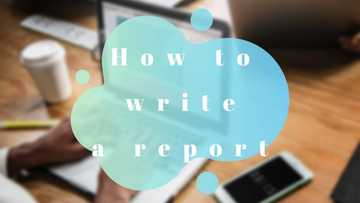How to write a term paper: a short guide
Writing a term paper is a nightmare for many students, but this should not be the case. With the right tutelage on how to write a term paper, you will definitely enjoy this task, and will soon be a pro at it.

Source: UGC
The main goal of writing a term paper is the consolidation of the student knowledge gained in the course of the educational process on the subject. Thanks to this, it is easier for the teacher to check the quality of the experience gained by the student and the ability to apply this knowledge to solve professional problems.
How to write a term paper step by step
A term paper is a type of student`s work,which includes elements of independent scientific research. It develops students' skills such as choosing and clearly formulating a research topic, collecting suitable material, using scientific literature and sources, sorting and logical systematisation of the collected material, and writing a readable text in compliance with the generally accepted rules. Do you want to learn how to write a term paper? We have prepared for you 10 steps that will help you to do it perfectly.
1. Choose a topic
Try to think outside the box. If you have the opportunity to choose a by topic yourself, take advantage of this chance. Choose what is interesting to you, because then it will be easier to write. As soon as you decide which theme to choose, you need to make sure that it can be revealed, because usually the time and size of the work are limited. Try to narrow the topic so that it can be presented within the boundaries of a single paper.
If you have already been given a theme, start analysing the exceptional aspects that separate the essence and information from the most obvious approaches that others will use. The conclusion should have an innovative mindset to the question, reflecting its nature to intrigue the reader. Do not forget to come up with a catchy title for your work.

Source: UGC
READ ALSO: How to write an application letter for job vacancy?
2. Undertake your own study
It makes no sense to start writing before you do the research. You must understand the origin and essence of the topic, as well as establish what research is needed in this area. Of course, you will be tempted to express in other words what you already know well, but you should not do this. Otherwise, you will not get anything new from writing such work. Start your research with a passion for the unknown and an openness to learn, and be ready to find new ways to solve old problems.
During the analysis, use both primary sources (original texts, documents, judicial precedents, witness testimonies, experiments, etc.), and secondary sources (interpretations and explanations of the source). You can also discuss the topic with students who have a similar point of view and even find online discussions, but such sources of exchange of opinions are not entirely suitable for quoting.

Source: UGC
3. Specify the main idea
After you have done the research, go back to the chosen topic. At this point, it is vital to emphasise the only central thesis that you disclose, the opinion that you will defend in your work, as well as the content and conclusion that the reader will understand. Your argument is the basis of your work, an idea that you will defend in all chapters. If it is superficial, then the whole paper will seem tasteless. Build the thesis so that it confirms that your report is interesting to you, then the proof will not be so boring. If you are sure that your idea is expressed simply and clearly, start writing the first draft.

Source: UGC
4. Write a work plan
Some people may skip this step and continue to write the paper. It is much better to have sketches in order to not go astray. The plan helps to keep the structure and certain frameworks to resort to them if you get confused in the middle of work. It also serves as the basis for your work, on which the location of parts depends. Some of the basic elements of a plan should include:
- Introduction
- Descriptive or explanatory paragraphs.
- Analytical or argumentative paragraphs.
- Questions that you have not found the answers to and points about which you are not yet sure.
- Conclusion.

Source: UGC
5. Express your point of view in the introduction
The introductory paragraph is difficult to write, but there is always a solution. This part of your work you will have to rewrite and correct. To write a great introduction, we offer the following:
- Catch the reader with a quote or question.
- Familiarise the reader with your topic, but make it laconic.
- Do not forget about a well-thought-out thesis.

Source: UGC
6. Reassure the reader
Make sure each paragraph confirms your argument. If you are not sure that the section is written correctly, try to separate the first sentence from each paragraph. All of them should appear as a list of evidence confirming your thesis.

Source: UGC
READ ALSO: How to write a CV in Nigeria
7. The conclusion should be impressive
We bring to your attention the following points:
- Try to rephrase your thesis, because one crucial detail is always in the last paragraph.
- Summarise in the conclusion. It should make the reader think.

Source: UGC
8. Use a particular style
Create the first page in the Modern Language Association referencing style (MLA) or the American Psychological Association (APA). References in the text will help you express your point of view, but do not overdo using too many other people's quotes, as this may give the impression that you cannot express your opinion in your own words.

Source: UGC
9. Do not cut to the chase
The amount of text is of great importance in the term paper, so it will be better to start editing it. Have you built the sentences correctly? Check each one and decide if you can use fewer words, keeping the meaning.

Source: UGC
10. Peruse the paper
Literacy check is only the first step of proofreading your term paper! If you are inattentive to mistakes, there is a high probability that you did not try very hard when writing this work. For best results, ask a friend to check your paper for mistakes.

Source: UGC
This term paper format is aimed at the development of skills related to the search and understanding of the information which goes beyond the scope of the list of established and compulsory literature. In the course of its performance, a student learns to analyse sources, correctly state the results obtained in studies.
Now you know how to write a term paper. Remember that it is a complex independent project where you solve educational and research tasks of a creative nature. Therefore, the material for it is not copied from the internet, but is passed through the prism of selfhood and is written only by you.
READ ALSO: How to write a maternity leave letter (with sample)
Source: Legit.ng








